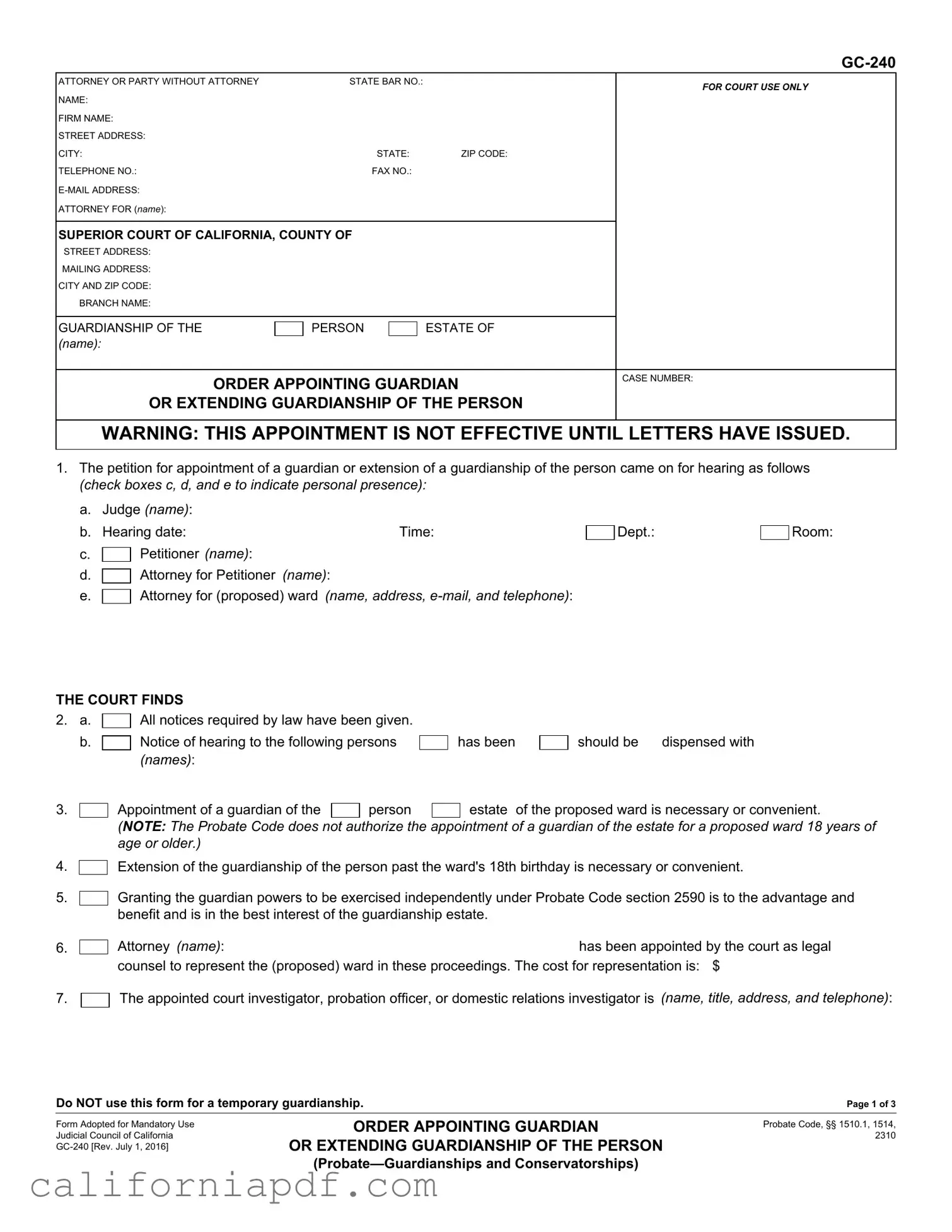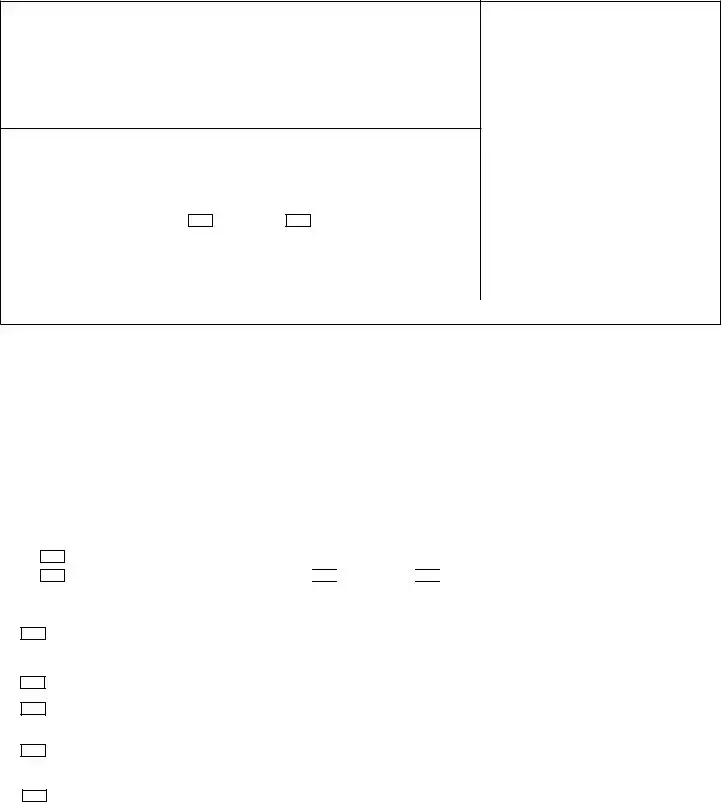The California GC-240 form, which deals with the appointment or extension of guardianship, bears similarity to other legal documents within family and probate law. One closely related document is the Petition for Appointment of Guardian (Probate Code §1510), which initiates the guardianship process. This petition lays the groundwork for what the GC-240 form continues, providing detailed information about the proposed guardian and ward, comparable to initiating the concern and identifying parties involved in the GC-240.
The Temporary Guardianship Petition serves as another similar document, focusing on the establishment of a temporary guardian ahead of a final decision. Like the GC-240, it addresses the immediate need for guardianship due to various circumstances, underlining the court's role in protecting individuals' welfare until a more permanent solution is enacted.
The Conservatorship Petition parallels the GC-240 form in its function for adults needing care, emphasizing the court's role in appointing a conservator for individuals incapable of handling their personal or financial affairs. This document, like the GC-240, requires detailed submissions concerning the parties involved and the necessity of such appointments, highlighting the court's protective jurisdiction over vulnerable populations.
The Guardianship of Estate form is another related document, specifically focusing on the financial and property aspects under guardianship. This form complements the GC-240's provisions related to managing the financial interests of the ward, underscoring the guardian's responsibilities towards the ward's estate.
An Advance Health Care Directive is similarly aligned with aspects of the GC-240, especially regarding decision-making for individuals who cannot make decisions for themselves. While not directly related to guardianship, it serves a parallel purpose in appointing individuals to make critical health decisions, reflecting the broader scope of legal instruments designed to protect personal welfare.
The Request for Order (Family Law) also shares similarities, particularly in its function to seek court intervention for various familial and guardianship-related matters. This document, while broader, overlaps with the GC-240 in its aim to provide a legal framework for family-related court orders, including but not limited to guardianship issues.
The Special Needs Trust Declaration, while more specialized, is akin to the GC-240 in its focus on protecting and managing assets for the benefit of individuals with disabilities. This document, designed to ensure financial security without affecting public benefits, complements the guardianship documents by safeguarding the ward's financial interests.
Lastly, the Declaration Under Uniform Child Custody Jurisdiction and Enforcement Act (UCCJEA) bears similarity in the context of court jurisdiction over child custody and guardianship cases. This form provides the necessary information to establish jurisdiction, akin to the preliminary steps in the GC-240 form, ensuring the child's welfare is appropriately managed under the correct legal authority.



 has been
has been 
 should be dispensed with
should be dispensed with 

 (name)
(name)
 Notice of hearing to the persons named in item 2b is dispensed with.
Notice of hearing to the persons named in item 2b is dispensed with.
 Bond is not required.
Bond is not required. Bond is fixed at: $
Bond is fixed at: $ Deposits of: $
Deposits of: $